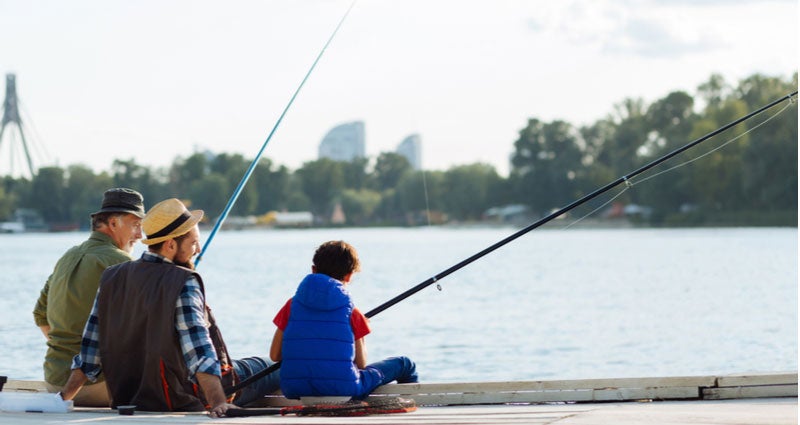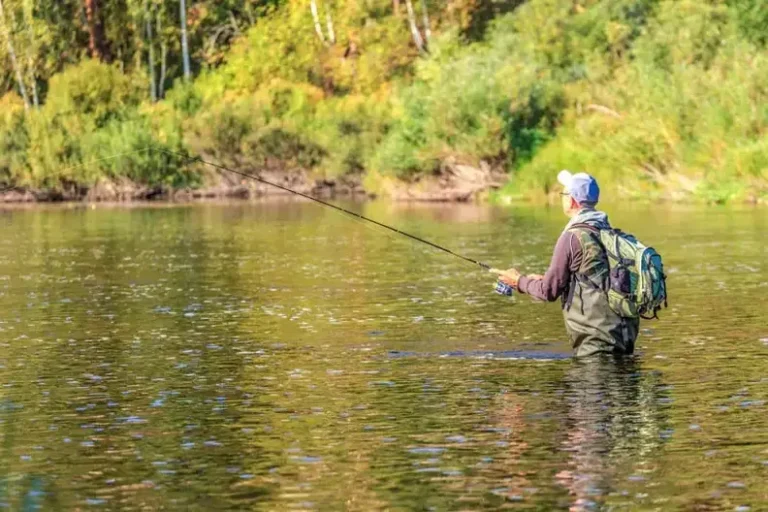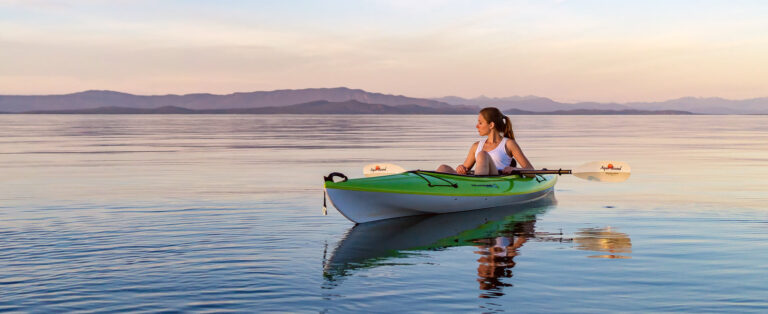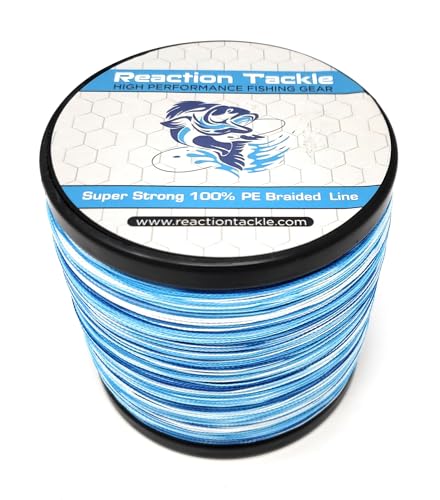To find productive surf fishing areas, observe for signs of fish activity and structure like baitfish, sandbars, and troughs. Then, experiment with different spots and techniques to determine where the fish are biting.
In order to increase your chances of success, it’s crucial to understand the tides, weather conditions, and the behavior of your target species. Surf fishing can be an exciting and rewarding pastime, but it requires patience, knowledge, and a bit of trial and error.
By paying attention to the environment and using your skills, you can uncover the best spots for a productive surf fishing experience. Enjoy the thrill of casting your line, feeling the pull, and reeling in your catch amidst the crashing waves.

Credit: anglianwaterparks.co.uk
Understanding Surf Fishing
What Is Surf Fishing?
Surf fishing is a thrilling and rewarding fishing method that involves casting your line from the shoreline into the ocean surf. This technique allows anglers to target various species of fish that inhabit the coastal areas. Understanding the basics of surf fishing is crucial for a successful and productive fishing experience.
Here are the key points to know:
- Timing is everything: Fishing during the right tide and time of day greatly increases your chances of catching fish. Research the optimal times for surf fishing in your area.
- Know your target species: Different fish species prefer different water conditions and habitats. Research the common fish species in your area and understand their feeding patterns and preferences.
- Location matters: Finding the right surf fishing spot is vital. Look for areas with structure, such as sandbars, jetties, or rock formations, as these provide hiding places for fish. Pay attention to changes in water depth and current flow as well.
- Observe the waves: Understanding wave patterns can help you determine where fish are likely to be located. Observe how the waves break and focus your fishing efforts in areas where waves create ripples or foam.
Gear And Equipment Needed For Surf Fishing
To maximize your surf fishing success, having the right gear and equipment is essential. Here are the must-haves for a productive surf fishing trip:
- Surf rod and reel: Opt for a sturdy and long surf rod, typically between 9 to 12 feet in length, to cast your bait far into the surf. Pair it with a saltwater-resistant reel that can handle the harsh conditions.
- Fishing line: Choose a strong monofilament or braided line with a test strength suitable for the species you are targeting. Thicker lines provide more abrasion resistance, ideal for battling larger fish and handling rough ocean conditions.
- Tackle and bait: Use appropriate tackle, such as pyramid sinkers, fishfinder rigs, or bucktail jigs, based on your target species and fishing conditions. Fresh bait, such as clams, shrimp, or cut bait, is highly effective for surf fishing.
- Beach cart or backpack: A sturdy beach cart or backpack helps transport your gear, rods, and bait easily across sandy beaches, allowing you to cover more ground during your fishing expedition.
Surf Fishing Techniques For Beginners
If you’re new to surf fishing, starting with the right techniques can greatly enhance your chances of success. Here are some beginner-friendly surf fishing techniques to get you started:
- Casting technique: Master the art of casting to ensure your bait reaches the desired spot in the surf. Practice different casting techniques, such as overhead casting or pendulum casting, and experiment with your casting power to achieve optimal distance.
- Bottom fishing: This technique involves casting your baited hook onto the ocean floor and waiting for fish to bite. Use a fishfinder rig or carolina rig to keep your bait near the bottom, where many species feed.
- Surf rigging: Utilize surf-specific fishing rigs, such as the fishfinder rig or high-low rig, to present your bait effectively in the turbulent surf. These rigs help keep your bait off the bottom and prevent it from being carried away by waves.
- Reading the water: Learn to read the water’s movement and understand how it affects fish behavior. Look for areas where baitfish might gather, such as rip currents or sandbars, as predatory fish often lurk nearby.
Now that you have a solid understanding of surf fishing, the necessary gear, and some beginner-friendly techniques, you’re ready to hit the shoreline and explore the thrilling world of surf fishing. So grab your rod, pack your essentials, and embark on your next fishing adventure.
Happy surf fishing!
Locating Highly Productive Surf Fishing Areas
The Importance Of Understanding Tides For Surf Fishing
Tides play a crucial role in determining the productivity of surf fishing areas. Here are the key points to consider when it comes to understanding tides:
- High tide vs. low tide: Knowledge of high and low tide cycles is vital for surf fishing success. Different species of fish have their feeding patterns affected by tides, and fishing during specific tide phases can yield better results.
- Understanding tidal movement: The movement of tides affects the behavior of fish and their prey. Typically, fish are more active during tidal changes, such as when the tide is coming in or going out.
- Timing your fishing: By understanding the tides, you can strategically plan your fishing trips. Research and observe the tide charts for the specific location you intend to fish. This information will help you determine the best times to maximize your chances of catching fish.
Identifying Key Features And Structures In The Surf Zone
To find productive surf fishing areas, it is crucial to identify key features and structures in the surf zone. Consider the following points:
- Sandbars: Sandbars act as natural underwater ridges, altering the flow of ocean currents. These formations attract fish that seek shelter or food in the eddies and pockets created by the sandbars.
- Rip currents: Rip currents are powerful channels of water flowing away from the shore. They occur when water forced onto the beach during breaking waves needs to find a path back to the sea. Fish, especially predatory species, are drawn to rip currents as they bring nutrients and prey along with them.
- Drop-offs: A sudden change in water depth, known as a drop-off, is an excellent spot for fish to ambush their prey. Look for areas where the sea floor transitions from shallow to deeper depths, as they often attract a variety of fish.
Using Technology To Find Productive Surf Fishing Areas
Thanks to modern technology, finding productive surf fishing areas has become easier than ever before. Consider the following techniques:
- Fishfinder devices: Utilize fishfinder devices that use sonar technology to map the underwater topography and locate fish. These devices can detect fish presence, water depths, and even identify underwater structures.
- Satellite imagery: Take advantage of satellite imagery available online to identify potential fishing hotspots. Look for areas where the water color changes, indicating variations in underwater features that may attract fish.
- Mobile apps: Various mobile apps provide real-time updates on tide charts, weather conditions, and fishing reports. These apps can provide valuable information on the best times and locations to fish, helping you increase your chances of success.
Understanding tides, identifying key features, and using technology will greatly enhance your ability to find productive surf fishing areas. Combining these strategies with your skills as an angler will lead to more rewarding fishing experiences and greater chances of catching impressive fish.
Happy surf fishing!
Strategies To Maximize Surf Fishing Success
Surf fishing can be an exhilarating and productive way to catch fish, but finding the right fishing spot is crucial to maximize your success. In this section, we’ll explore some strategies that will help you identify and locate productive surf fishing areas.
Choosing The Right Bait For Surf Fishing
- Match the bait to the target species: Research the species you’re targeting and determine the type of bait they prefer. Different fish have different feeding habits, so using the right bait will attract them to your line.
- Natural bait options: Common natural bait for surf fishing includes shrimp, sand fleas, clams, and mullet. These baits are readily available and attractive to a wide variety of fish.
- Artificial bait options: If you prefer using artificial baits, consider using lures that resemble the prey of your target fish. Soft plastic swimbaits, spoons, and topwater lures can be effective in the surf zone.
Rigging Techniques For Different Surf Fishing Conditions
- Carolina rig: This rig works well in sandy or murky conditions. It consists of a sliding sinker, swivel, leader line, and hook. The sliding sinker allows the bait to move with the water current, attracting fish.
- Pompano rig: Designed specifically for targeting pompano, this rig consists of multiple hooks attached to dropper loops. It allows you to present multiple baits at different depths, increasing your chances of catching fish.
- Fishfinder rig: Ideal for fishing in areas with rocks or debris, this rig incorporates a sliding sinker, swivel, leader line, and hook. The sliding sinker helps prevent your line from getting snagged.
Tips For Casting And Retrieving In The Surf Zone
- Use a long surf rod: A longer rod will allow you to cast your bait further into the surf where the fish are likely to be. Aim for a rod between 9 and 12 feet in length for optimal casting distance.
- Time your cast with the waves: Cast just after a wave has receded to take advantage of the natural current that carries baitfish and attracts predatory fish.
- Vary your retrieve speed: Experiment with different retrieval speeds to determine what the fish are responding to on the day. Some days, a slow and steady retrieve will work best, while other days a faster retrieve may be more effective.
By implementing these strategies, you can increase your chances of finding productive surf fishing areas. Remember to always check local fishing regulations and consider the tides, weather conditions, and seasonal patterns to further enhance your surf fishing success. Happy fishing!
Conclusion
Finding productive surf fishing areas requires careful consideration of various factors such as weather conditions, tides, and topography. By researching local fishing reports and using online tools, anglers can identify hotspots where fish are likely to congregate. Studying baitfish behavior and understanding species preferences can further enhance the success of surf fishing expeditions.
It is important to adapt and experiment with different techniques and bait to determine what works best in a particular area. Additionally, respecting the environment and practicing responsible fishing methods is crucial for the sustainability of fish populations and the preservation of natural habitats.
With patience, perseverance, and a bit of luck, anglers can discover productive surf fishing areas that provide memorable experiences and bountiful catches. So, grab your gear, explore the coastlines, and embark on an exciting surf fishing adventure to reel in the big ones.
Happy fishing!






